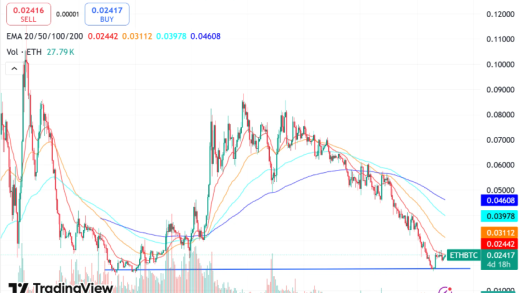1. Industry Risk Analysis
(1) Policy Risk
From the perspective of the policy lifecycle, the medical bed and chair industry is facing dual risks during the policy iteration period. In the policy implementation stage, the dynamic adjustment of the medical insurance catalogs in various regions and the rapid implementation of the centralized procurement policy for medical consumables may lead to the sudden collapse of the product price system. During the policy evaluation stage, the regulatory authorities are strengthening the traceability of the clinical effects of Class II medical devices. Some existing high – end products with redundant functions and lack of evidence – based medical support are at risk of being taken off the market due to non – compliance. Entrepreneurs need to be vigilant against the “sudden supervision” during the policy window period. Product R & D should be pre – embedded with clinical data collection ports to meet the dynamic compliance requirements.
(2) Economic Risk
Currently, the medical bed and chair industry is facing the risk of demand – side fluctuations during the economic downturn. The procurement of medical institutions may delay or reduce their budgets due to fiscal tightening, while the non – rigid demand in the household consumption market is weak because of the slowdown in the growth of residents’ disposable income. The prices of upstream raw materials are significantly affected by the fluctuations of international commodities. Coupled with the high logistics costs, the profit margins of enterprises are squeezed from both sides. The acceleration of industry technology iteration is mismatched with the depreciation cycle of existing equipment, forcing entrepreneurs to bear the pressure on the capital chain between R & D investment and market returns. They need to be vigilant against the risk of cash – flow disruption caused by unsalable inventory.
(3) Social Risk
From the perspective of inter – generational consumption, the medical bed and chair industry is facing the risk of inter – generational demand rupture. The silver – haired group is limited by insufficient consumption power and price sensitivity, relying on the traditional medical insurance system, with a significant ceiling on their payment ability. Although the middle – aged children who are the decision – making group have consumption power, they prefer new product categories such as intelligent health devices, and there is a generational gap in their perception of traditional medical devices. Young entrepreneurs are faced with the dilemma of high user education costs and long service cycles. At the same time, they need to deal with the social trust crisis caused by medical ethics disputes (such as the tendency of over – medicalization) and data privacy disputes (the collection of health data by intelligent devices). The industry is facing the challenge of value reconstruction between the rigid demand of the aging population and the inter – generational consumption gap.
(4) Legal Risk
In the medical bed and chair industry, entrepreneurs face five core legal risks: legal liability caused by non – compliant product quality (such as the compensation risk for injuries to users due to failure to meet medical device standards), intellectual property infringement disputes (copying others’ designs or technological patents), illegal advertising and promotion (false efficacy promotion in violation of the Advertising Law), labor employment risks (arbitration risks caused by non – standard labor contracts or lack of social insurance), and environmental protection penalties (non – compliant production emissions). They need to establish a compliance system to avoid regulatory accountability.
2. Entrepreneurship Guide
(1) Suggestions on Entrepreneurship Opportunities
In response to the accelerating aging population and the surging demand for rehabilitation medical care, there are three major entrepreneurship opportunities in the medical bed and chair industry. Firstly, develop intelligent products suitable for multiple scenarios (such as home care beds and chairs integrated with physical sign monitoring and voice control). Secondly, build a sharing and leasing service platform for beds and chairs centered around hospitals (integrate the disinfection and distribution system and connect with medical insurance payment). Thirdly, provide modular and combined nursing unit solutions for elderly care institutions (integrate anti – bedsore technology and out – of – bed alarm function). Currently, the focus should be on two rigid – demand scenarios: home care for postoperative rehabilitation patients and the aging – friendly transformation of community nursing homes. Quickly enter the market through lightweight product transformation (such as adding intelligent seat cushions to ordinary wheelchairs to monitor the risk of pressure sores), and simultaneously layout a joint service system with medical device distributors and rehabilitation doctors.
(2) Suggestions on Entrepreneurship Resources
In the integration of entrepreneurship resources in the medical bed and chair industry, priority should be given to obtaining medical device certification resources. Cooperate with third – party institutions with experience in Class II medical device registration to shorten the product compliance cycle. Focus on the industry – university – research cooperation related to intelligent nursing technology, and obtain technical verification support through university laboratories or clinical departments of tertiary – level hospitals. Establish OEM cooperation with the medical device supply chain clusters in the Yangtze River Delta or the Pearl River Delta regions, and focus on investigating ODM manufacturers with the production qualifications for hospital beds and nursing equipment. Targeted connection with regional rehabilitation assistive device industry funds and special subsidies for smart elderly care, and at the same time, lock in provincial agents with hospital channel resources through medical device exhibitions. Establish a user experience advisory group composed of head nurses and rehabilitation doctors from tertiary – level hospitals, and directly integrate clinical feedback into the product iteration process.
(3) Suggestions on the Entrepreneurship Team
The entrepreneurship team in the medical bed and chair industry should be centered around a medical professional background, forming a composite team covering talents in three fields: medical device R & D, clinical demand insight, and production quality management. Special attention should be paid to recruiting technical leaders with experience in Class II medical device registration, and matching them with channel operation personnel familiar with the hospital procurement process. It is recommended that the core team should include at least one on – the – job consultant from the rehabilitation department of a tertiary – level hospital. At the same time, a full – time regulatory affairs specialist should be arranged to track the updates of industry standards such as GB 24415 – 2009 in real – time. An agile decision – making mechanism integrating medicine and engineering should be established, and regular on – site investigations of clinical scenarios should be carried out to maintain a strong connection between product iteration and real needs.
(4) Suggestions on Entrepreneurship Risks
Entrepreneurs in the medical bed and chair industry should focus on controlling the following risks. Firstly, strictly follow the regulations on medical device registration and production to ensure that products pass the national Class II medical device certification, and avoid being banned from the market due to incomplete qualifications. Secondly, establish a full – process quality traceability system, strengthen the review of raw material suppliers and the ex – factory inspection standards, and prevent the risk of medical accidents caused by product defects. Thirdly, develop differentiated functions (such as intelligent pressure monitoring and out – of – bed alarm) for elderly care institutions and home care scenarios to avoid homogeneous competition. Fourthly, adopt a capital model of order advance payment + hospital payment term management, and support innovative services such as equipment leasing to reduce the procurement pressure on customers. Fifthly, deeply bind with regional medical distributors, prioritize the layout in pilot cities for the integration of medical care and elderly care, and reduce the channel development cost.





